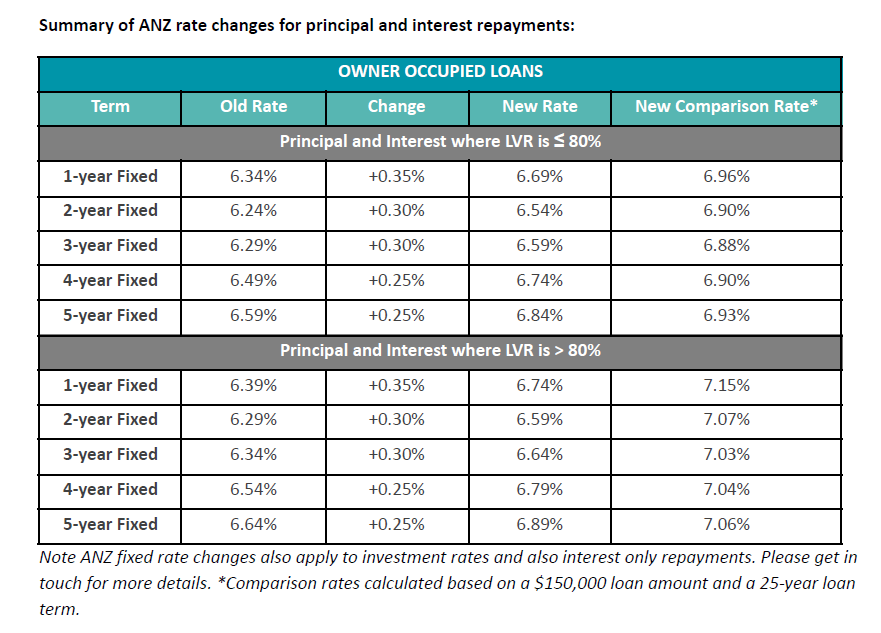

ANZ has raised its owner-occupied and investment fixed rates by as much as 0.35%, making this the major bank’s fourth fixed-rate adjustment since the last cash rate increase in June, Canstar has reported.
ANZ has raised its principal and interest one-year fixed rates by 0.35 percentage points, while its two- and three-year rates increased by 0.30 percentage points, and its longer-term four- and five-year fixed rates have seen a 0.25 percentage point rise.
ANZ’s lowest fixed rate for owner-occupied loans with an 80% LVR is its two-year fixed rate, standing at 6.54% (6.9% comparison rate). This rate is 0.91 percentage points higher than the lowest two-year fixed rate for an 80% LVR found on Canstar.com.au, which is 5.63% (6.19% comparison rate) offered by Australian Mutual Bank.

All major banks have made variable and fixed interest rate changes since July, despite the cash rate pause.
The Canstar insights also indicated that despite all major banks raising variable rates by 0.25 percentage points (or more, as seen in the case of CommBank, with some variable rates increasing by up to 0.4 percentage points) after the June cash rate hike, further rate hikes have subsequently occurred.
Commenting on the out-of-cycle rate moves, Steve Mickenbecker (pictured above), Canstar’s finance expert, said fixed rates may only loosely relate with the Reserve Bank cash rate. He said that such out-of-cycle moves, whether increases or decreases, are not uncommon. In fact, ANZ cut its fixed rates back in September.
“Fixed rates are funded from term deposits and from wholesale raisings like mortgage-backed securities, which determine the lending rate that banks can offer,” Mickenbecker said. “With Australian government bond yields up by around 0.6% in the last two months, wholesale funding costs will also have gone up.
He said that the other major banks have been copying ANZ’s approach to interest rates, and it wouldn’t be surprising if they also decide to lift their fixed rates in the same way ANZ has done recently.
“Fixed rates have been out of favour with borrowers as they have at times in the last two years moved up ahead of variable rates,” Mickenbecker said. “In September, only 4.3% of new lending was in fixed rate loans and as increases are not passed on to existing loans, the impact to borrowers will be minimal.”
“Recently fixed rates for some terms have on average been around 0.35 percentage points below variable rates,” he said. “A move at the magnitude of ANZ’s increases across the market would wipe out that fixed rate advantage, but there is a very good chance that it will be partially restored with a Reserve Bank cash rate increase looking likely this month.”
Get the hottest and freshest mortgage news delivered right into your inbox. Subscribe now to our FREE daily newsletter.
